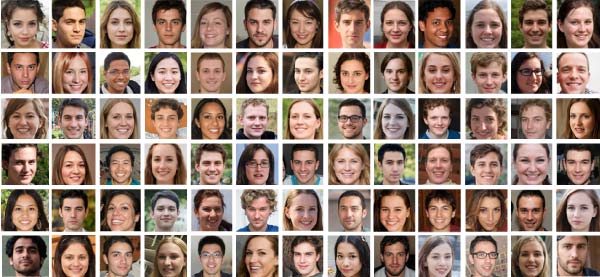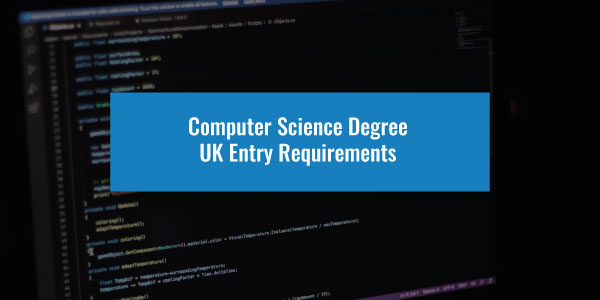TMUA LEAK 2024
Please be aware that there have been reports of a limited number of questions from the October 2024 TMUA paper allegedly being leaked prior to the second sitting of the test on October 17th.
A representative from Imperial College London has addressed the situation, stating that an investigation is currently underway at UAT-UK and Pearson VUE. The university states they have been reassured that “there is no reason to believe that this limited impact should undermine confidence in the overall results.” The January 2025 sitting of the TMUA was not mentioned.
The full statement can be found here and will be updated as more information is released. The University of Cambridge has yet to make a statement. Please be wary of information found on social media, as the representative states that most of this information is “inaccurate“.
We will report any updates regarding this situation when they are made available. For now, we recommend contacting the university/college directly if you have any further concerns.
If you are applying to Computer Science or Economics at Cambridge, you will have to sit the TMUA as part of the admissions process.
The Admission Test is made up of two papers that you sit consecutively over two and a half hours. In this guide, we’ll go over everything you need to know for the first paper – Paper 1 – of the TMUA.
In this guide, we’ll go over everything you need to know for Paper 1 of the TMUA.
What Is Paper 1 Of The TMUA?
Paper 1 of the Test of Mathematics for University Admission is made up of 20 multiple-choice questions which you have 75 minutes to answer.
In Paper 1 you will be assessed on your ability to apply your knowledge of Maths in foreign situations. That is the questions will apply your knowledge from A-Level Mathematics, but they want to see if you can apply it, not just memorise it.
Most of the mathematical knowledge required for the paper is featured in the Pure Mathematical specification for AS Level Maths and Higher-Level GCSE Maths, meaning nothing included should be unknown to you.
What Maths Knowledge Do You Need For TMUA Paper 1?
Essentially, the Paper 1 questions will be like a selection of the hardest questions that appear in your A-Level Maths exam.
Your ability to differentiate functions with lots of terms might be called on. You might have to rearrange complex formulae.
Other questions will have you dealing with wordy probability problems, where the formula you need to know will not be immediately clear.
You may also have to find regions of trigonometric functions where certain conditions are satisfied. As well, you could get questions about the integration of two shapes overlapping on the Cartesian plane.
Another aspect you may get questions about is the trapezium rule, especially to work out when it gives an overestimate, or an underestimate.
Being able to solve non-linear simultaneous equations and finding terms of a sequence are other topics you should ensure to be familiar with.
Enrolling on our Cambridge Economics comprehensive Programme will give you access to TMUA support.
When you enrol on our TUA Programme, you’ll receive everything you need to get a top score in the TMUA. Your tutor will give you actionable feedback with insider tips on how to improve and score highly on the Admissions Test for the best chances of success.
Press the button below to discover our world-leading support and learn how we can triple your chances of success.
10 TMUA Paper 1 Questions and Worked Solutions
Question 1
How many positive roots does the function 𝑓(𝑥) = 𝑥4 − 8𝑥3 + 22𝑥2 − 24𝑥 have?
- 0
- 1
- 2
- 3
- None of the above
Answer: 2
Factoring the given expression will prove fruitless. Instead, identify its stationary points. Differentiating, we see that 𝑓′(𝑥) = 4(𝑥3 − 6𝑥2 + 11𝑥 − 6) = 4(𝑥 − 1)(𝑥 − 2)(𝑥 − 3), which we factorise by inspection (or by using the factor theorem). Now we can establish 𝑓(1), 𝑓(2), 𝑓(3), and using the asymptotic limits of +∞ for both large positive and negative x, and the obvious root at 0, we have the following sketch., from which we see one positive root.
Question 2
In which of the following ranges is (𝑥2 − 1)(𝑥 + 2)(𝑥 + 4) > 0?
- −2<𝑥<1
- −1<𝑥<2
- −2<x<−1
- 𝑥≥1
- 𝑥<−3
Answer: 3
We may factorise the function as (𝑥 − 1)(𝑥 + 1)(𝑥 + 2)(𝑥 + 4), which allows us to graph it.
Question 3
The roots of 𝑥2 + 3𝑥 + 𝑐 = 2 differ by 7. What is c?
- −10
- −8
- 13
- −4
- 5
Answer: 2
The roots are given by −3±√9−4(𝑐−2), making the difference √9 − 4(𝑐 − 2) = 7, gives 𝑐 = −8.
Question 4
What is the probability of rolling the same number exactly three times with five six-sided dice?
- 10/36
- 17/32
- 125/648
- 108/124
- 133/648
Answer: 3
The probability of any three given throws giving the same given number is (1/6)3. Now any number can be 6 repeated three times, giving us (1/6)3 × 6. Now we count the ways we can place these three throws in the 6 five – this is just five choose three, 10, giving (1/6)3 × 6 × 10 = 10/36. Now we have to discount the times that 6 36 the other two numbers are the same as our given number. Fix a number n. The probability that in two throws, at least one of those yields n is just 11, by counting the possibilities. (say n is 1, we get 11, 12, 13, 36 14, 15, 16, 21, 31, 41, 51, 61) for instance. So, the probability it is not is 25/36, which we multiply our previous probability by, so our answer is 10/36 × 25/36 = 125/648.
Question 5
An arithmetic series has first term a and a common difference d.
The sum of the first 10 terms is 1075. The third term of the sequence is 15.
Find the values of a and d
- 𝑎=5,𝑑=−4
- 𝑎=7,𝑑=3
- 𝑎=−24,𝑑=19.5
- 𝑎=−59,𝑑=37
- 𝑎=3,𝑑=6
- 𝑎=−2.5,𝑑=8.75
Answer: 4
𝑆n = 10/2[2𝑎 +9𝑑]= 1075
2𝑎 + 9𝑑 = 215
𝑈n = 𝑎 + 2𝑑 = 15
𝑎 = 15 − 2𝑑
Substitute this into the other equation:
2(15−2𝑑)+9𝑑 = 215
30–4𝑑 + 9𝑑 = 215
5𝑑 = 185
𝑑 = 37, sub back in for 𝑎 = −59
Question 6
I have 2 blue balls and 3 red balls which I will throw into 5 indistinguishable boxes. Assuming I don’t miss, how many distinct situations could I be in after all the balls are thrown?
- 14
- 55
- 32
- 16
- 8
- 4
- 53+52
Answer: 4
This is a problem about counting. The boxes are indistinguishable, which means we only care about how the balls are distributed, not specifically which boxes they are in.
A good way to approach these is to have an order to the counting. We shall do it based on how many boxes are empty at the end:
0 – This is only true if there is 1 ball in each box, and there is only one way to do this.
1 – There must be two balls in 1 box and 1 in the other 3. The two balls could both be blue, both be red, or be 1 of each.
2 – There are two possibilities here, a 3, 1, 1 split, or a 2, 2, 1 split. In the former case, the 3 balls could be all red, 2 red 1 blue, or all blue. Either way they uniquely determine the other balls. In the latter case, we consider where the two blue balls are; they could be in the same box, one could be in each of the boxes with 2 balls in, or one could be in a 2 box and the other in the 1 box. As there are no other ways to distribute the blue balls, this is an exhaustive list.
3 – All balls being only in 2 boxes means they are split 1, 4 or 2, 3. In the former, there are 2 possibilities, the single ball is red, or it is blue. In the latter, there are 3 possibilities for the box with two balls in, RR, BB or RB, but no matter what this also determines what is in the other box.
4 – Only one way, all the balls are in the same box
Summing these possibilities, we have 16 ways.
Question 7
What is the digit in the 10,000s’ place in the number 3015?
- 0
- 9
- 3
- 5
- 1
- 2
- 7
Answer: 2
Obviously, this question could be done by brute force, but there is a much quicker way. 3015 = (1 + 3 × 102)5. If we treat this like a binomial expansion, we are looking for the coefficient of 105. If we look at the first few terms, (301)5 = 1+5×3×102 +10×9×104 +10×27×106 +⋯. The later terms will be too large, and it is clear here the only 105 term here will have coefficient 9.
Question 8
What is the shortest distance between these two circles?
𝑥2 +𝑦2 −14𝑥−4𝑦+44=0
𝑥2 + 𝑦2 + 6𝑥 + 8𝑦 = 0
- 0
- 2√11−8
- 44
- 2√26−8
- 2√34−8
- 64
- 6√7+5
Answer: 5
The shortest distance between two lines is always a straight line, that must be perpendicular to both lines. This means that this “shortest distance line” for a circle must be an extension of a radius of the circle. Because we are comparing two circles, the shortest distance line is an extension of both of their radii; the only time these are the same line is on the line connecting the centres of the two circles.
We can complete the square on both equations to obtain (𝑥 − 7)2 + (𝑦 − 2)2 = 32 and (𝑥 + 3)2 + (𝑦 + 4)2 = 52. We can read off the centres of the 2 circles as (7, 2) and (−3, −4). We then need only calculate distance between these two points √(7 − (−3))2 + (2 − (−4))2 = √100 + 36 = 2√34. This value, minus the lengths of the 2 radii, is the distance between the two circles i.e. 2√34 − 8.
Question 9
How many solutions does the equation cos 2𝑥 × log 𝑥 = sin 2𝑥 have in the range 0 < 𝑥 < 3𝜋?
- 0
- 3
- 5
- 6
- 7
Answer: 3
Note that we may divide by cos 2𝑥 to obtain the equation log 𝑥 = tan 2𝑥. We have to be careful though that we have no solutions when cos 2𝑥 = 0, but this is clear since if cos 2𝑥 = 0, then sin 2𝑥 = ±1. Now draw a graph of log 𝑥, and of tan 2𝑥 and count the number of intersections in the range. There are 5.
Question 10
Find the coefficient of 𝑥3 in the binomial expansion of:
𝑦 = (2𝑥 – 1)9.
- 8
- −8
- 72
- −72
- 112
- −112
- 672
- −672
Answer: 7
The expansion coefficients for 𝑛 = 9 are unlikely to be known, so instead the formula 𝑛!/𝑟!(𝑛−𝑟)! must be used.
Expansion coefficients = 1, 9, 36, 84, 126, 126, 84, 36, 9, 1
Expansion: (2𝑥)9 + 9(2𝑥)8(−1) + 36(2𝑥)7(−1)2 + 84(2𝑥)6(−1)3 … ..
Coefficient for x3 will be (84)(2)3(−1)6 = 672
Conclusion
Hopefully, this has given you a better understanding of what is in store with Paper 1 of the TMUA. We have a wide range of practice questions and past papers if you need to practise further.
What is important to remember is that all the knowledge you already know, it is about being able to apply it in new ways.
The questions provided should hopefully give you the opportunity to the test, as long as you do not peek at the answer too early as then you are only hindering yourself. Best of luck for the TMUA!
Best of luck for the TMUA!
Our expert tutors are on hand to help you with all aspects of the Cambridge Economics application.
With our Cambridge Economics Programme, we help you craft the perfect Personal Statement, perform strongly on the TMUA and teach you how to Interview effectively.
Discover our Cambridge Economics Premium Programme by clicking the button below to enrol and triple your chances of success.








